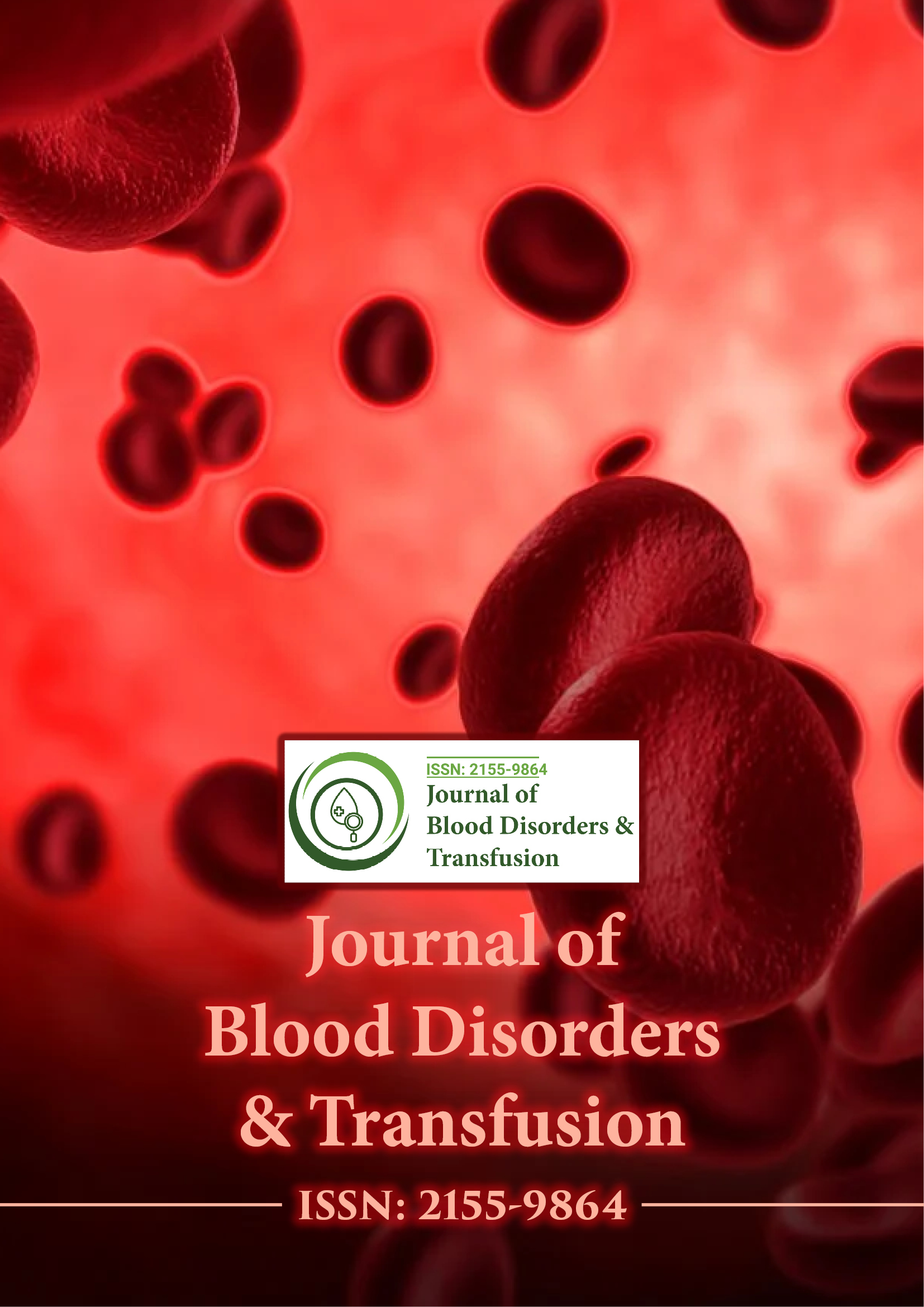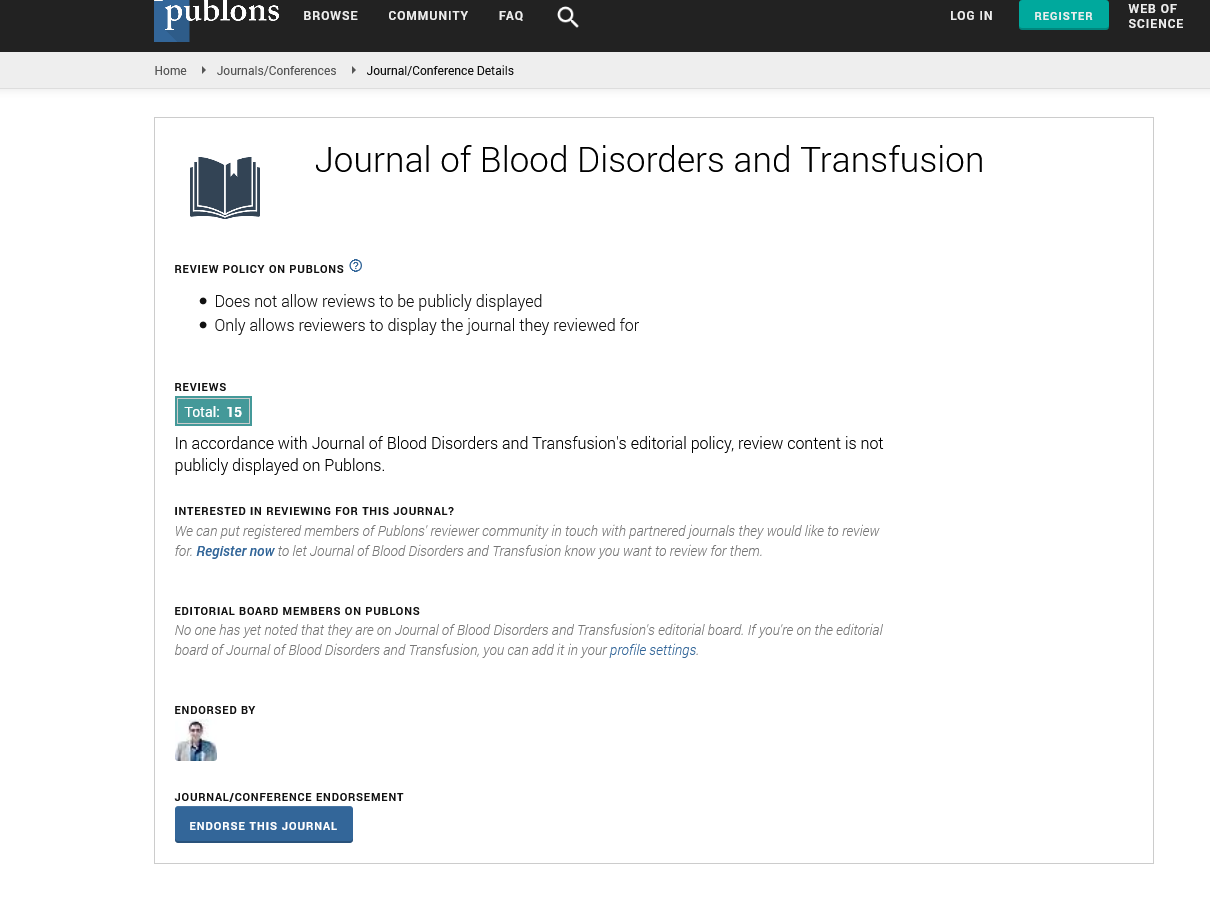Indexed In
- Open J Gate
- Genamics JournalSeek
- JournalTOCs
- Ulrich's Periodicals Directory
- RefSeek
- Hamdard University
- EBSCO A-Z
- OCLC- WorldCat
- Proquest Summons
- Publons
- Geneva Foundation for Medical Education and Research
- Euro Pub
- Google Scholar
Useful Links
Share This Page
Journal Flyer

Open Access Journals
- Agri and Aquaculture
- Biochemistry
- Bioinformatics & Systems Biology
- Business & Management
- Chemistry
- Clinical Sciences
- Engineering
- Food & Nutrition
- General Science
- Genetics & Molecular Biology
- Immunology & Microbiology
- Medical Sciences
- Neuroscience & Psychology
- Nursing & Health Care
- Pharmaceutical Sciences
ABO and rhesus D blood group and haemolytic disease among the new-born at Sokoto Specialist Hospital, Nigeria
7th World Hematologists Congress
May 08-09, 2017 Barcelona, Spain
Osaro Erhabor, Saleh Ribah Ati, Abdulrahman Y Abdulrahman Yakubu and Bello Umar Tambuwal
Usmanu Danfodiyo University, Nigeria
Specialist Hospital Sokoto, Nigeria
Scientific Tracks Abstracts: J Blood Disord Transfus
Abstract:
The spectrum of haemolytic disease of the new-born has changed over the last decade. With the implementation of rhesus D immunoprophylaxis, haemolytic disease due to ABO incompatibility and other alloantibodies has now emerged as major causes of this condition. In this present study, we investigated ABO and rhesus D blood group distribution and haemolytic disease among the new-born in Sokoto Specialist Hospital Nigeria. The study included a total of 79 samples each collected from mothers and neonates delivered in Sokoto Specialist Hospital. ABO and rhesus D blood group was determined on samples from the mothers and the neonates. Direct anti-globulin test (IgG and complements) was carried out on the samples from the neonates. ABO, rhesus D and direct anti-globulin (IgG and complements C3b and C3d) was carried out using the column agglutination technique (Ortho Diagnostics, USA). ABO blood group distribution indicated that a total of 44 mothers were of blood group O (55.7%), 22 were of blood group A (27.8%), 12 were of blood group B (15.2%) and one was AB (1.3%). Among the neonates, rhesus D positive has the highest frequency of 57 (72.2%) and rhesus D negative with a frequency of 22 (27.8%). Rhesus D group distribution among the mothers indicated that 74 mothers were rhesus D positive (93.7%) and only 5 were grouped as rhesus D negative (6.3%). Of the 79 neonates tested, 36 were of blood group O (45.6%), 21 were of blood group A (26.6%), 20 were of blood group B (25.3%), 2 were of blood group AB (2.5%). Haemolytic disease of the fetus and new-born (HDFN) status of the neonates indicated that four neonates were positive (5.1%). Two (2.5%) cases were ABO incompatibility-related while rhesus D related incompatibility accounted for two (2.5%). Among the four cases of HDFN, two cases (2.5%) of due to the effects of complements while two (2.5%) were due to IgG antibodies. Findings from this study indicates that haemolytic disease of the fetus and newborn due to ABO and rhesus D incompatibility between mothers and their babies is prevalent in Sokoto, North Western Nigeria. We recommend that universal antenatal screening in all pregnant women can be initiated. A close follow up throughout pregnancy is required to detect the presence of irregular antibodies. There is need to consider universal antenatal screening and provision of prophylactic anti-D prophylaxis to prevent rhesus D negative pregnant women from producing immune anti-D following potentially sensitizing events and HDFN in subsequent pregnancies.
Biography :
Osaro Erhabor is a Professor of Hematology, Transfusion Medicine and Laboratory of Total Quality Management. He is an Alumni of Rivers State University of Science and Technology, Nigeria, University of Greenwich in the United Kingdom and Francis Tuttle College of Technology in Oklahoma, USA. He is the Author of five scientific books. He has published more than 190 scientific papers in the field of Infectious Diseases, Hematology, Blood Transfusion Science and Total Quality Management. He is a member of the editorial board as well as an article Reviewer of several international scientific journals.
Email: n_osaro@yahoo.com

